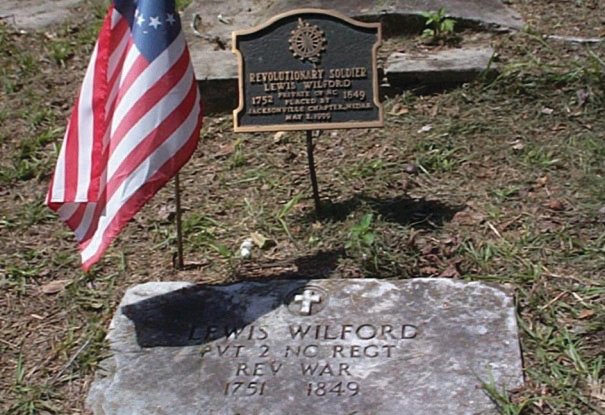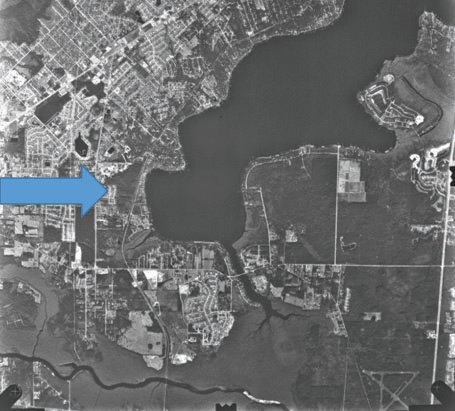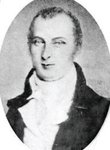Celebrate Clay County History: The American Revolution comes to Clay County
CLAY COUNTY – The American Revolution brought raids and extensive damage to British East Florida. Some saw Florida as a great resource for slaves, timber, cattle, cotton and whatever else they …
This item is available in full to subscribers.
Attention subscribers
To continue reading, you will need to either log in to your subscriber account, or purchase a new subscription.
If you are a current print subscriber, you can set up a free website account and connect your subscription to it by clicking here.
If you are a digital subscriber with an active, online-only subscription then you already have an account here. Just reset your password if you've not yet logged in to your account on this new site.
Otherwise, click here to view your options for subscribing.
Please log in to continueDon't have an ID?Print subscribersIf you're a print subscriber, but do not yet have an online account, click here to create one. Non-subscribersClick here to see your options for subscribing. Single day passYou also have the option of purchasing 24 hours of access, for $1.00. Click here to purchase a single day pass. |
Celebrate Clay County History: The American Revolution comes to Clay County
CLAY COUNTY – The American Revolution brought raids and extensive damage to British East Florida. Some saw Florida as a great resource for slaves, timber, cattle, cotton and whatever else they could lay their hands on during raids. Not all those involved in the turmoil of this era fit the bill of Revolutionary War heroes.
Instead, some operated more like small bands of raiders and ungrateful thieves. They would strike fast and retreat just as fast, back into Georgia.
That doesn’t mean that American military commanders weren’t involved. The Continental Army planned an official invasion in 1776. George Washington considered St. Augustine to be of great strategic importance. As a result, Governor Patrick Tonyn sent several of his workers to St. Augustine to build up public defenses. To keep property and homes out of the revolutionary rebels’ hands, General Augustine Prevost decided to burn “all houses and manufactured timber” along the west and north of the St. Johns River and around Doctor’s Lake.
Tonyn carried out the order. He wrote that his orders were "fully executed” and his own 20,000-acre plantation on Black Creek was destroyed. He lost two plantation homes, sixteen slave cabins, two barns, four sets of indigo vats and 3,000 cypress planks. Tonyn retreated to the east side of the river and set up a new estate there.
Two plantations, Spring Garden and Tobacco Bluff, were located at the back, west side of Doctors Lake. In 1766, John and William Bartram made their epic trip up and down Black Creek. John Bartram was able to describe the "great spring" at Spring Garden as "half a mile or more broad, and six or seven long; at the head of which is a large creek...” Eventually, Zephaniah Kingsley would power his sawmill with the spring’s water flow. Today, the flow of that spring is a mere shadow of its original strength.
Spring Garden Plantation was 400 acres in size and Tobacco Bluff Plantation was 600 acres in size. Between 1774 and 1776, indigo exports from Spring Garden and Tobacco Bluff sold in London for £556 Sterling total. Landowner Wilkinson considered the land excellent for timber and naval stores and set a value of £2844 (about $3,233 in today’s currency) on the property, including slaves.
On July 1, 1776, armed American revolutionaries from Georgia surrounded the slaves at Tobacco Bluff as they worked in the fields. Twenty-seven men and women were abducted and marched to Georgia. The cattle, horses, hogs, indigo and provisions fields, a framed and weather-boarded barn, a log dwelling house, a mill house, slave dwellings, indigo vats, and poultry houses were destroyed or stolen by the raiders. Wilkinson purchased additional laborers and resumed operations at Doctor's Lake in 1778, but indigo cultivation was replaced by naval stores production.
General Washington did not give up easily. In April 1778, Washington called for another invasion. An Army consisting of Continental regulars under the command of Robert Howe joined forces with Georgia militia led by their governor John Houston – nearly 2,000 troops in all. It didn’t go well. Howe realized that the East Florida terrain was inhospitable, and the British regulars and East Florida Rangers were formidable foes.
After the Revolutionary War was over and Britain ceded Florida back to Spain, some settlers from the former colonies made Florida their home. One of them, Lewis Wilford, is buried in Old Hickory Grove Cemetery in Green Cove Springs.
There is a historical site marker located in Jacksonville just off the Riverwalk, on the south bank of the St. John's River, in front of the Wachovia Building. The historical marker commemorating Lewis Wilford and John McIntosh contains the following:
“Private Lewis Wilford (1752-1849) served in the Second Regiment, North Carolina Line. He wintered with the Continental troops in Valley Forge. His activities during the Revolutionary War included serving as a private and as a prisoner of war. Wilford served in the War of 1812. Duval County, Florida includes the sites of his plantation, known as "Wilford Place" and of his 1824 marriage to Silva Turner Myers at Trout Creek."
“General John McIntosh (c)1756-1826 was born in Darien, Georgia. He assisted botanist William Bartram 1773-1774 and in 1774 they explored along the St. John's River. His activities during the Revolutionary War included serving as a captain, lieutenant colonel, and as a prisoner of war. He served in the War of 1812 as a general. He died in McIntosh County, Georgia.”
McIntosh had a much closer link to Clay County than just a burial. He bought Laurel Grove from Zephaniah Kingsley. Kingsley bought McIntosh’s plantation on Ft. George Island and today it is the Kingsley Plantation National Park.
It seems McIntosh had rebellion in his blood. He soon caused trouble for the Spanish. While living along the St. Johns River, he was arrested by Spanish troops and imprisoned at St. Augustine. He was suspected of illegal activities against the government and was sent to prison for a year in Morro Castle, Havana. Once sprung from the clink there, McIntosh returned and perpetrated further acts against the Spanish in Florida. He was part of an attack on a fort near Jacksonville, on the shores of the St. John's River. In 1811, McIntosh became involved in the Patriots’ Rebellion. American settlers wanted to seize the colony of Florida from the Spanish and give it to the new United States. At first, the rebellion was successful but soon the covert aid provided by the United States government disappeared. Now, with a target on his back, McIntosh fled to Georgia. McIntosh Avenue in Orange Park is named after him.
For the next thirty-seven years after Spain got her prized colony back, things ran smoothly for the most part. There were no more revolts against Spain. But, by 1821, Florida was an American territory.













